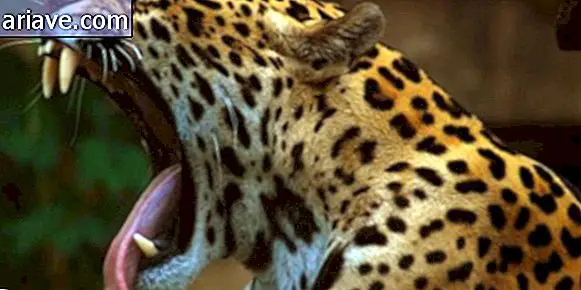Meet some of nature's most colorful animals [gallery]
Those who follow Mega Curioso know that we like to stay on top of unusual species of animals. And as the beauty of the colors of these animals also deserves highlighting, the peacock spider and lobster mantis have already passed through here.
In the list you see below, the animals are even more colorful. These are exotic species that stand out for the rarity of their skin, feathers or scales. Birds, reptiles, insects and sea creatures are responsible for a true color spectacle like you have never seen.
Check out each of the animals and tell us in the comments if you know any more species full of colors that could be part of this list.
1) Panther Chameleon

- Scientific Name: Furcifer pardalis
- Habitat: Eastern and northern regions of Madagascar
- Trivia: Chameleons are commonly known for easily changing color. In the case of panther chameleons the variety of colors is immense and these incredible effects depend on the temperature, the light and even the mood of the reptile. Also, when they are pregnant, females of the species use this feature to communicate to other animals that they cannot mate.
2) Lilac-breasted Roller

- Scientific Name: Coracias caudata
- Habitat: Sub-Saharan Africa and Southern Arabian Peninsula
- Trivia: The Lilac-breasted Roller is a relatively large bird compared to other rollers, as it can reach 36 inches in length. But the main feature that sets it apart from other birds is its extremely colorful plumage, which features feathers in shades of lilac, green and blue.
3) Weevil Beetle

- Scientific Name: Entimus imperialis
- Habitat: Brazil
- Curiosities: The most curious aspect of this Brazilian species of beetle is the bright spots it has on the body. Researchers who studied the species found that the dots are not pigments, but crystal structures that reflect color. For its incomparable beauty, the insect is also known as the jewel beetle.
4) Nudibranchs

- Scientific name: There are over 3, 000 species with varied names.
- Habitat: Seas around the world, including the tropics and Antarctica
- Curiosities: Because they have a huge variety of species, the main feature of these animals is the wide range of colors. Strong and vibrant nuances alternate with the different shapes that creatures present and this gives them more security to camouflage between the corals and fight for survival.
5) Golden Pheasant

- Scientific Name: Chrysolophus pictus
- Habitat: Mountainous Areas of Western China
- Trivia: These birds can measure up to one meter, and two thirds of the total length is thanks to their tail. The animals that feature the rich plumage in shades of gold, blue and red is the male. The female, in turn, is less exuberant and closely resembles a common pheasant.
6) Sea Dragon

- Scientific Name: Phyllopteryx taeniolatus
- Habitat: South Australian Coastline
- Curiosities: Although they have some similarities, one of the main differences between seahorses and sea dragons is the size. While a seahorse measures a maximum of 15 centimeters, a sea dragon can reach 45 centimeters in length. And in addition to the rich color of the animals, the females of the species produce about 250 eggs at a time - and they are pink!
7) Birds of paradise

- Scientific Name: Paradisaeidae sp.
- Habitat: New Guinea
- Curiosities: Birds of paradise are divided into more than 30 species - one more different and colorful than the other. With peculiar habits, males dance and display their beautiful colored feathers to attract females. Unfortunately, the rare and exotic plumage that beautifies these animals is the same that causes their death, as their feathers are traded illegally and this puts the birds at risk of extinction.
8) Blue Bullfrog

- Scientific Name: Dendrobates azureus
- Habitat: Brazil and Suriname
- Curiosities: With the skin of a radiant color, the scientific name of the animal comes precisely from the word azure, which indicates a shade of cyan blue. The black spots scattered on the body of the animals have a unique arrangement and serve to identify each of the amphibians. Interestingly enough, the strong and striking color serves to warn other animals that it is a poisonous species.











